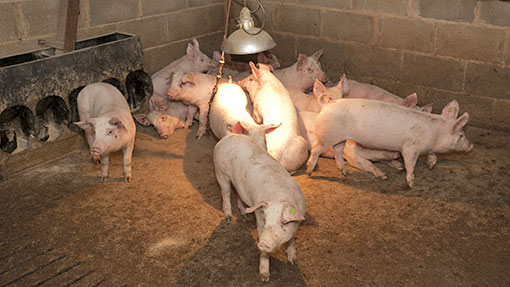Pig & Poultry Fair 2014: Four steps to cutting pig and poultry energy costs

There are four key areas to consider when driving down energy costs for pig and poultry housing, according to one expert.
Speaking at a seminar at the Pig & Poultry Fair, Rob Meadley of Brown and Co said that farmers needed to look at four key areas: switch off unnecessary equipment such as kit on standby, shop around for the best contract, increase the efficiency of energy used and, finally, consider generating their own.
See also Read all of our Pig & Poultry Fair 2014 news
Starting with switching off, check if lights are being left on when not needed or equipment on standby. Timers can be useful in avoiding this waste, he said.
The next area is to shop around for the best deal as it can be too easy sticking with the same energy supplier year after year. He recommended using an independent energy broker to help identify the best energy deals available.
His third area is to increase the efficiency of energy used, by using invertors to reduce power use by ventilation fans and also more efficient lighting. “There may be a capital cost, but LED lighting uses 90% less energy and there is no flickering like with other types of light, which helps with animal welfare.”
See also Turning chicken litter into renewable energy
Finally, consider generating your own energy, such as PV solar panels or anaerobic digestion. Renewables not only enable businesses to produce their own energy and save costs, but also provides income diversification through government reward schemes, such as the Renewable Heat Incentive and Feed-in Tariffs.
But he warned that the biggest limiting factor for renewable projects is having a good connection with the grid and check early on for local feasibility. “Local capacity can be taken up by other projects. It can make or break a project,” stressed Mr Meadley.
